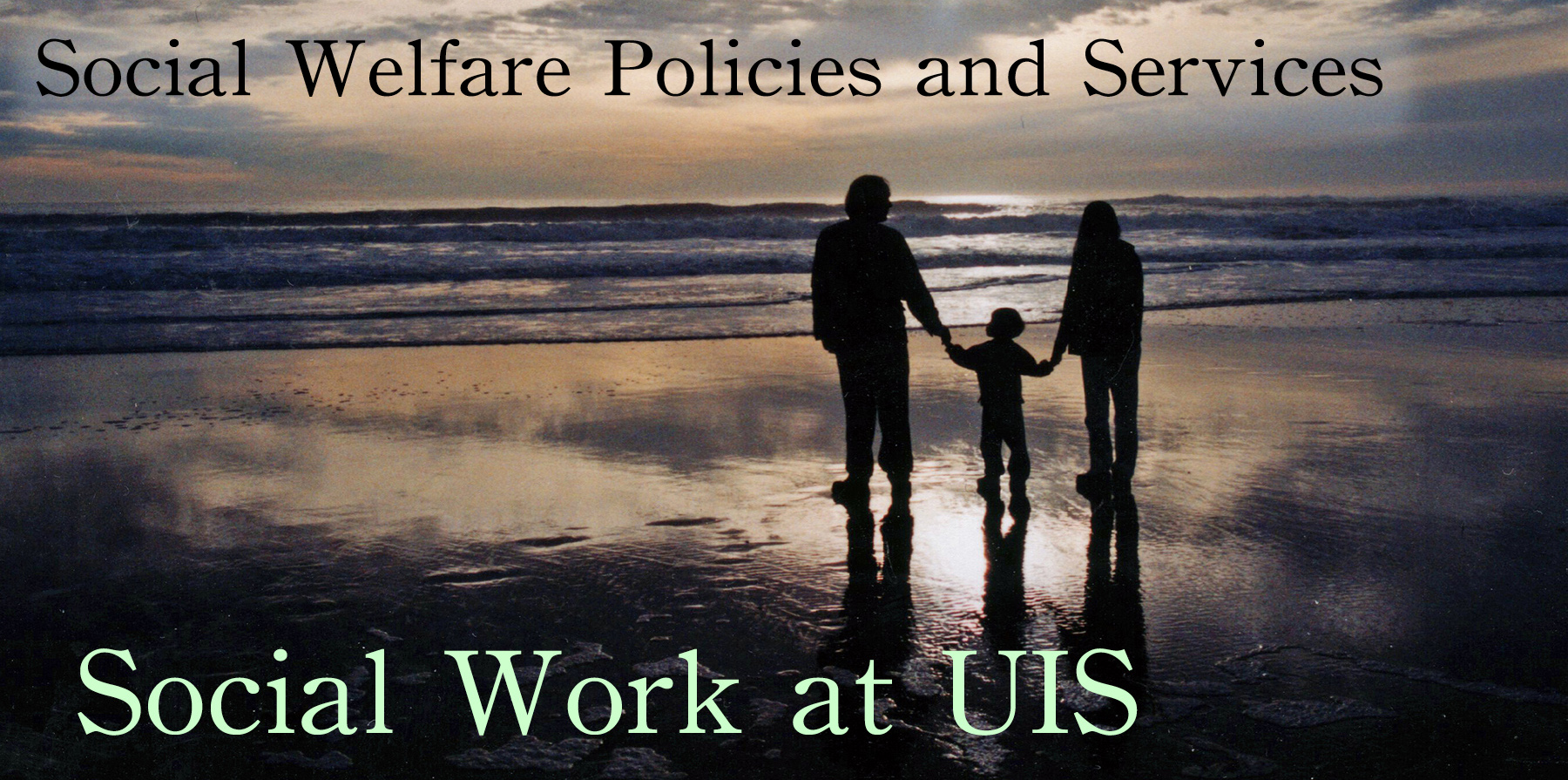Class session lasts from November 25 at 2:00 p.m. to December 2 at 1:59pm, but the discussion boards will not be graded until after December 9th.
This page describes what you should do in this second session.
What must you read this week?
Learn about bad information related to welfare and services
Today we will look at three examples of bad information. There are many sources of bad information, and although conservative sources are notorious in recent years for spreading lies and falsehoods, the liberal and radical sources do a fine job of publishing misleading or false information as well. As a university graduate, you ought to be better than most persons without a college education at detecting false and misleading information.
The Illinois Policy Institute is a source of a constant stream of misleading or outright false information. To find bad information, you merely need to go to their website, and it will be easy to find stories that are just untrue or highly misleading. There is a whole network of sources of bad information on the right of the political spectrum that cite each other, and this forms a sort of oligarch bubble of bad information. The radical left has a similar bubble of bad information, but my impression is that the collection of left-wing sources has more diverse sources that compete with each other, and an audience that has slightly better critical thinking abilities, so that the collection of sources on the left that generate information of dubious quality and then quote each other has a higher ratio of accuracy/truth to falsehood than the right-wing bubble. The right wing, in contrast, is highly dependent on a few family foundations and wealthy people behind-the-scenes who fund everything. The Illinois Policy Institute is no exception, as it gets much of its funding from the Bradley Foundation, the Donors Capital Fund, the DeVos Foundation, the Smith Foundation, the Searle Freedom Trust, and the Olin Foundation.
Take a look at this article from the Illinois Policy Institute, with the lede: “Families in Illinois again carry a heavier tax load than anywhere else in the United States.” The source is WalletHub, with analysis run by experts representing a mix of crack-pot libertarian professors from a range of third-rate universities. For accurate information, look at information from the Federation of Tax Administrators, who divide aggregate state and local spending (after subtracting federal grants and assistance) by aggregate state personal income, to get the actual percentage of all personal income in a state that goes through taxes to local and state government spending. These data show that Illinois ranks 35th in the nation in percentage of personal income taken in state taxes (5.9% of personal income in Illinois goes to the state of Illinois through taxes, which must include our 4.95% state income tax plus various other excise taxes and state sales taxes). Illinois has high property taxes (which fund local services like schools, police, city government, local roads, etc.), so if you combine all the local taxes with the state taxes, Illinois jumps up to 13th highest in the nation, with 11% of personal income going to taxes for local and state government services. That still is not the highest in the nation (for the highest tax rate, look at the 14.9% of personal income in New York that goes through taxes to state and local government). The Illinois Policy Institute, citing the dubious WalletHub information, claims that “Illinois families pay just shy of 15% of their income in total state and local taxes, based on the average U.S. household income of $60,602. That is $9,064 in state and local taxes, which are on top of federal taxes averaging $9,000”. Did you notice that in addition to giving false and misleading information about Illinois families paying 15% (when on average it cannot be much higher than 11% since all the tax revenue in state and local government combined in Illinois is about 11% of all personal income), that same sentence also lies about what people pay in taxes? They are comparing the median income household to the mean taxes paid, The mean taxes paid in federal income tax includes the taxes paid by people who who earn millions of dollars each year, and excludes millions of persons who earn no income and file no income tax forms. If they cared about accuracy, they would have cited the figures from the IRS on what a typical family earning $60,602 paid in federal income taxes (they paid 7.5%, or $4,545, according to Figure F. on page 27 of the IRS report on all individual returns from 2018). You could include the 7.65% Americans pay to Social Security and Medicaid (another $4,636) and get up to the $9,000 figure, but the payroll taxes pay for old age pensions, disability insurance, a pension for survivors if a worker dies before retirement, and medical insurance when someone reaches 65 and starts collecting Medicare, and those are all benefits directly going to the person paying the payroll tax, and not money going to general revenue for spending on “government” in the general sense, so including that as part of “taxes” in a comparison between federal and state taxes is also misleading.
Read this 2017 article from Fox Business: These states spend the most on public welfare programs telling us that California, New York, Texas, and Florida spend a lot of money on Medicaid, food assistance, and housing assistance (and even here, they get much of this wrong, since it is the federal government that covers the costs of SNAP and Housing Choice Vouchers and Public Housing and half the cost of Medicaid, so it is misleading to say these “states are spending” all this money). The article points out that less populous state spend less (oh, those thrifty states like South Dakota only “spend” (sic) $1 billion on Medicaid, SNAP, and housing assistance compared to those generous overpopulated liberal states like California ($106 billion) and New York ($61.4 billion) . The article doesn't even give us the spending per capita (easy to figure out: California has 39.5 million persons, so it seems $2,680 per capita goes to welfare, whereas South Dakota (885,000 persons) is a place where $1,130 per capita goes to welfare). The article might have told us something interesting, like “spending per capita on welfare is higher in states where incomes and property values are higher" or "spending on welfare in states correlates to the population of the state, but the rate of poverty in the state as well as the cost-of-living and average incomes in states also determine the per-capita spending on welfare"). But, no, the article just tells us that California and New York spend (sic) a lot more money on welfare than the Dakotas or Montana. Why is this news?
For two more examples misleading or false articles, read “Poverty and the Pyrite State” (the Weekly Standard, September 29, 2017). The article cites the Census Bureau for the claim that 20% of Californians live below the poverty rate, making poverty in California the highest in the nation. (see facts at the Census Bureau, showing that California does not have 20% living below the poverty rate (about 11.8% were below poverty in California when the article was written). California had poverty rates well below those in such states as West Virginia, Kentucky, North Carolina, Alabama, Mississippi, Arkansas, Louisiana, and New Mexico, and the same Census Bureau report shows that poverty rates were falling faster in California than in at least 41 other states. The article was just wrong. Very wrong. Bad information.
Mainstream moderate and liberal media join in piling on the lies and misleading information about welfare and poverty. Read this article by Anahad O'Conner, in the New York Times, from January 13, 2017, “In the Shopping Cart of a Food Stamp Household: Lots of Soda.” What sort of an impression does that article create? Now, read this critique from Joe Soss here in Jacobin. A gallup poll collected within a couple years of the Department of Agriculture grocery expenditure study showed “Regular Soda Popular With Young, Nonwhite, Low-Income” suggesting that the consumption habits of persons using SNAP reflect the preferences of others in their demographic categories. The fact that this was ignored by O’Connor suggests that he is not a good journalist and the New York Times sometimes prints articles that are misleading and conceal relevant information that would help readers understand what is being reported.
There, you have read four articles that were misleading and wrong. You have been exposed to bad information in this class. But, you have seen how the information was bad, and I hope this will help you to be a critical consumer of information, and to be careful of what you believe.
Learn about Human Rights issues in policies and services.
Read this dialog:
All humans are born free and equal in dignity and rights. They are endowed with reason and conscience and should act towards one another in a spirit of brotherhood.
But what about a person who is born with such significant malformations of brain and body that they are profoundly cognitively disabled, and will never speak or communicate, and are not physically able to do any self-care at all, and will for a few decades remain dependent on others for help taking care of their activities of daily living until they finally die?
All human beings are born free and equal in dignity and rights.
But I am asking about cases where people are not endowed with reason and conscience, and are so significantly disabled that they cannot act in a spirit of brotherhood.
It does not matter; all people have inherent dignity and equal and inalienable rights. This is the foundation of freedom, justice, and peace in the world.
But what about an elderly person who has dementia, and is sometimes violent, and can hardly communicate any more, and doesn't recognize anyone, or even know who they are? What about these people who require help for all their activities of daily living, and yet they are dangerous and unpredictable in their state of disordered thinking? Such persons are equal and have dignity?
All human beings are born free and equal in dignity and rights. The rights are inalienable. They are inherent. They are not dependent on cognitive function or behavior.
But what about criminals? What about a horrible person who raped people and tortured people, and buried people alive and killed them? What about a monster like that?
Governments do have a right to restrict rights to protect the rights of of others, and some rights can be lost as a consequence of criminal acts. But, all human beings are born free and equal in dignity and rights. Even after restricting some rights, we must recognize the inherent dignity and the equal and inalienable rights of all members of the human family, and even a person who has acted with cruelty and savagery still has inalienable rights. The definition of “inalienable" is that you cannot lose them. The definition of “inherent" means it is there by definition. If you are a human, by definition you have dignity and inherent rights. You can’t lose those, no matter what you do.
But what about about someone who is in an accident, or has a stroke, and now they are in a coma. They need help with their biological functions as well as their activities of daily living. They are not even conscious. They will be dependent on others for years, possibly.
All human beings are born free and equal in dignity and rights. We must recognize the inherent dignity and the equal and inalienable rights of all persons. There is no exception for persons who are in a coma, or immobilized or uncommunicative after an injury or illness, just as there are no exceptions for persons who are sleeping.
And what about the parents who abuse children, or the boyfriends who beat their girlfriends, or the murders, or drug dealers, or….
All human beings have inherent dignity and equal and inalienable rights. People who break laws and harm others may have some rights restricted in order to protect the rights of others, but everyone has other rights which are inalienable rights, and you cannot lose inalienable rights. And all people have inherent dignity, even if that dignity is concealed by the depravity of their behavior. They have inherent dignity and must be treated with respect for their dignity and inalienable rights.
What are these inalienable rights?
They are listed in the Universal Declaration of Human Rights, which has 30 articles. Some of the rights listed in the Universal Declaration of Human Rights are clearly not inherent rights, because punishment for crime can remove those rights, but other rights listed in that document are inalienable, and even prisoners who have committed terrible crimes retain such rights. Many of the rights are aspirational, which means at some points in development we may not yet be able to ensure that everyone enjoys the rights, but just because governments are incapable or unwilling to ensure everyone’s rights are respected does not have any bearing on whether those persons have rights.
What are all humans (no exceptions) born with? Answer: All humans are born free and equal in dignity and rights. Everyone is born with dignity and rights.
What is the foundation of freedom, justice, and peace in the world? Answer: Recognition of the inherent dignity and of the equal and inalienable rights of all (no exceptions) members of the human family.
Download the 2017 human rights training manual “A Human Rights Approach to Social Justice”. This manual has over 170 pages, but you only have to read a few of the pages. You have three reading objectives: 1) understand that applying a human rights approach using the model this manual proposes requires seven steps, and you should know these steps; 2) read some examples of how people have their human rights violated by injustices in our society, so that you have a clear and concrete idea of how violations of human rights might look in our country and see how they often are connected to social welfare policies and services; and 3) read about organizations that use a human rights approach in their policy practice and service delivery.
To achieve an understanding of the model for applying a human rights approach, you need to read pages 112-114 and then look over pages 115-139 to make sure you have some idea what is intended by each one of the steps:
1: Define Human Rights Goal
2: Identify Marginalized Groups
3: Analyze Root Causes of Human Rights Violations
4: Identify Stakeholders
5: Evaluate Capacity Gaps
6: Create Action Plan
7: Evaluate Program Impact
To achieve an understanding of what violations of human rights in the USA might look like, you need to read pages 47-50 and 52-55. There is a discussion board question about the case of Alejandro, and you will find points to consider about his case on page 51. If you need to know more about human rights (which ones might be violated in the case studies you read), pages 58-66 have lists of the human rights.
To learn about groups using a human rights approach, you need to read page 106 (about the Heartland Alliance for Human Needs and Human Rights).
Mass Incarceration
Your final reading assignment of the semester is to look at the most recent report from the Prison Policy Initiative (March 24, 2020) by Wendy Sawyer and Peter Wagner, Mass Incarceration: The Whole Pie 2020. You need to understand the five myths from this report:
1) Releasing “nonviolent drug offenders” would end mass incarceration. No, it would not. Fewer than 9% of persons incarcerated are held in private facilities.
2) Private prisons are the corrupt heart of mass incarceration. No, they are not. But, 94,000 persons are held in private facilities for state prison systems, so that is still a lot of persons, and another 55,000 are held for the Bureau of Prisons & U.S. Marshals Service.
3) Prisons are “factories behind fences” that exist to provide companies with a huge slave labor force. No, this is untrue; less than 1% of incarcerated persons work for private companies (and they are paid minimum wage before deductions), and only about 6% of incarcerated persons work in state-owned correctional industries.
4) People in prison for violent or sexual crimes are too dangerous to be released. Not necessarily. The nine-year incidence of arrest for all released prisoners is around 83% (that is arrests after release, not conviction or incarceration), but recidivism data suggest persons convicted for violent and sexual offenses are least likely to be rearrested; persons who committed rape or sexual assault have rearrest rates 20% lower than other offenders.
5) Expanding community supervision is the best way to reduce incarceration. Not as currently practiced. People under community supervision (e.g., probation, parole, pretrial supervision, etc.) often end up incarcerated anyway because these supervision systems are not well-designed and put so many restrictions on persons that they often seem to set them up for failure.
What must you watch this week?
There is nothing assigned for you to watch this week.
What are the discussion questions this week?
Discussion Question 1:
Discussion Question 14-1: Check in. Tell us how you are doing and what is going on in your life? Let us know how you are. Tell us what friendship means to you.
Discussion Question 2:
Discussion Question 14-2: Bad Information and Critical Thinking
I offer a few examples of articles about social welfare and welfare spending, which you were asked to read in session 14:
an article from the Illinois Policy Institute, with the lede: “Families in Illinois again carry a heavier tax load than anywhere else in the United States,” and compare it to the information from this more authoritative source.
These states spend the most on public welfare programs (Fox Business, November 29, 2017)
Poverty and the Pyrite State (the Weekly Standard, September 29, 2017) (see facts at the Census Bureau)
In the Shopping Cart of a Food Stamp Household: Lots of Soda (Anahad O'Conner, New York Times, January 13, 2017). (see critique here)
Why are such articles published? What are editors who approve these thinking? What are the journalists who write them thinking? How do they influence the mood of the public and the policy-makers who decide our welfare policies? What is the social worker role when we see such information?
Discussion Question 3:
Discussion Question 14-3: Early Christian Theology and the Service Core Value in Social Work
For this discussion point, let us consider the Stromata (Miscellanies) of Titus Flavius Clemens (Clement of Alexandria), who lived (no one is sure exactly when) from about 150 to approximately 215.
...Notice that he has not told you to wait until someone asks or begs you to share your wealth. No. You yourself must look for those worthy disciples of the Savior whom you can aid. As the apostle has most excellently put it, "The Lord loves a cheerful giver." (2 Cor. 9:7). The cheerful giver delights in giving. he doesn't hold anything back. Instead, he sows so that he will reap. He does it without murmuring, disputing, or showing regret. This is the giving that is pure. Even more blessed is what the Lord said in another place: "Give to everyone who asks you." (Luke 6:30) This shows how delighted God is when we give. And this saying is above all divinity: not waiting to be asked but finding out for ourselves who deserve to receive kindness....
...How then does man give? For I will give not only to friends, but to the friends of friends. And who is it that is the friend of God? Don't you judge who is worthy or unworthy. For it is possible that you will be mistaken in your opinion. It is better to do good to the undeserving for the sake of the deserving than to fail to meet the needs of the good because you are guarding against those who are undeserving. By holding back you may neglect someone God loves. And the penalty for that is the punishment of eternal fire (Matt. 25:41-46)...
...Open your compassion to all who are enrolled as the disciples of God. Don't look contemptuously at personal appearance. Don’t be carelessly disposed to only a certain age group. if someone appears to be penniless, or ragged, or ugly, or feeble, don't let your soul fret about it and turn away from them....
Whether you profess a Christian faith or not, the values and the ethics of the Christian faith are relevant in the United States, as a high proportion of Americans claim to be Christians, attend church regularly, and respond to surveys saying that their religion is “very important” or “important” to them in their daily lives (30% of Americans pray daily and attend religious service at least once a week).
Please use this discussion thread to discuss the implications of what a significant early leader of the Christian Church taught and what goes on today in American thinking about social welfare and services.
For example, Clement seems to have preferred the error of sensitivity to the error of selectivity, but does his attitude prevail today among Christian Americans, why or why not?
In some places Clement seems to intend that generosity be confined to other Christians and members of the Christian community, yet in some passages (in his discussion of the Good Samaritan story elsewhere in the Stromata, for example) he seem to have been urging early Christians toward benevolence and charity toward all persons. Does this tension between “we ought to take care of our own” and “we ought to take care of everyone” still exist in how people think about social welfare policies and services in America today? If you perceive the tension is still relevant, how do you see it informing the debate about welfare?
Many liberal Christians may prefer to vote for candidates who are likely to raise taxes and increase spending on social welfare, health care, education, and social services. These persons might take Clement's urging to be generous and benevolent as a justification for their preference to vote for candidates who might force everyone to give more so that all the poor in our society will get more. Many conservative Christians may prefer voting for candidates who are likely to lower taxes and decrease spending on welfare. These persons might be more generous with their personal money (although, evidently, it may depend upon what sort of benevolence you are measuring, and in the USA, religious people may give more, but there is no difference in giving that can be predicted by ideology, if you control for religiosity and religious giving). But whether conservative Christians are more generous or not, they might see Clement’s urging for Christians to be more generous as applying to interpersonal relationships directly experienced between the giver and receiver. From their conservative point of view, the process of coercively taking money through taxes and redistributing it through impersonal welfare systems may seem to thwart or diminish the power of the sort of charity that Clement is describing.
What is your understanding of Christian ethics, Social Work ethics and American ethics in terms of our duties to care for the “penniless, or ragged, or ugly, or feeble"”as Clement described? What is the root of your value system that guides your thinking about which sort of welfare policies and services ought to be supported?
Discussion Question 4:
Discussion Question 14-4: Test preparation.
Can you find the most recent answers to these ten questions?
About how many people were receiving Social Security Retirement Insurance pensions (as retired persons or their survivors) in September of 2018?
Who said: “When the capital development of a country becomes the by-product of the activities of a casino, the job is likely to be ill-done.”
What is the term for the thing described here? In large systems with many variables and many people working to provide something, there will be a problem of choosing to set up systems to prefer one of two types of errors: either errors of sensitivity (allowing some who should be served to not get service even though they ought to get it) or else problems of selectivity (allowing some who should not be served to get service they don’t deserve). Attempts to remove both types of error increase administrative costs to a point where the resources devoted to removing error outweigh the benefits of reducing error. Attempts to reduce errors of selectivity will tend to increase errors of sensitivity, and likewise, efforts to reduce errors of sensitivity will tend to increase errors of selectivity.
Other examples: If you want to be sure all arrested criminals are convicted, you will make it easy for prosecutors, and you will convict more wrong-doers, but you will also convict more innocent persons (you are not sufficiently selective in your justice system); but if you want to eliminate wrongful conviction of the innocent, you will make things easier for defenders, and tougher for prosecutors, and thus you will have fewer wrongful convictions, but you will allow many criminals to escape the justice system without punishment (your system isn't sufficiently sensitive, and people who should be detected and convicted are getting away). You could put tremendous resources into ensuring that all guilty persons are always convicted and no innocent persons are ever wrongfully convicted, but eliminating all the error in your judicial system would cost so much that no one ever really does this; we accept that a small number (or not so small number) of criminals escape conviction and a very small number (we hope) of innocent persons are wrongfully convicted. There is a similar situation in medicine with decisions about whether a case requires a particular intervention or not, or whether sufficient tests are run with sufficient specificity to identify all cases worthy of treatment and treating many who do not benefit from treatment or else becoming more lax with diagnostic tests so that we will give fewer persons superfluous treatment, but as a result more people who would benefit from treatment will never have their problems diagnosed.
Who said, “Our merchants and master-manufacturers complain much of the bad effects of high wages in raising [prices]. They say nothing concerning the bad effects of high profits. They are silent with regard to the pernicious effects of their own gains. They complain only of those of other people.” ?
In approximately how many (a percentage) of cases investigated by child protective agencies does a parent eventually have their parental rights terminated? That is, when child welfare agencies determine that they will investigate a referral or call to the hot-line, and they assign a child protection worker to go out and investigate a case, in what percentage of those cases is a child eventually permanently removed from the family?
What percentage of American men are arrested at some point in their lives?
In Illinois, what is the maximum monthly SNAP benefit for a family of four with two adults, one adult being disabled, and two children, aged five and seven, assuming neither adult has earned any income (the disabled adult is unable to work and the able-bodied adult devotes all their time to caring for the children and the disabled spouse)?
Which major programs to support persons with lower incomes and prevent malnutrition among poor and near-poor households are administered by the US Department of Agriculture?
Approximately what percent of cases investigated by child protective agencies result in an indication that child maltreatment has occurred?
In 2018 a four-person household in Chicago, with two children claimed as dependents, in which the annual household income is $19,000, applies for the Earned Income Tax Credit when they do their taxes in 2019; what would be the Federal EITC benefit received by the family be?
Discussion Question 5:
Discussion Question 14-5: Why do Americans seem to care so little about human rights education and the Sustainable Development Goals?
In the previous session, you read about the Agenda 2030 and the Sustainable Development Goals. In some parts of this planet, the Sustainable Development Goals (and, for that matter, the Universal Declaration of Human Rights) are considered very important. School teachers in many countries must include human rights in their lessons for children of all ages, and human rights education is a big thing outside of the United States. Likewise, in many countries, average people know what the 17 Sustainable Development Goals are, and when they consider the policies of their government, they are interested in how well their country is doing in attempting to meet the sustainable development goals. But, in the United States, my impression is that most people have not heard of Agenda 2030 or the Sustainable Development Goals, and I also do not think American teachers tell their students much about human rights. Do you agree with my impression that in the United State we are ignoring the SDGs, and our schools ignore human rights education? Let me know if you think I could be wrong. If you agree with my impression, what should we do about this? Why is our country so out-of-tune with the global development agenda?
Discussion Question 6:
Discussion Question 14-6: In which of the 16 objectives did you make the largest gains?
As you write your self-evaluation of your efforts and learning in this course, you may want to look over the 16 objectives for this class. Pick one or two of these objectives where you think you have made significant gains in your skills or knowledge or way-of-thinking, and describe a bit about what you have learned. Hint: your answer to this discussion board question can be copied and pasted into your self-evaluation paper.
-
Advocate for client access to the services of social work.
-
Analyze, formulate, and advocate for policies that advance social well-being.
-
Collaborate with colleagues and clients for effective policy action.
-
Distinguish, appraise, and integrate multiple sources of knowledge, including research-based knowledge, and practice wisdom.
-
Demonstrate effective oral and written communication in working with individuals, families, groups, organizations, communities, and colleagues.
-
Recognize the extent to which a culture’s structures and values may oppress, marginalize, alienate, or create or enhance privilege and power.
-
Understand the forms and mechanisms of oppression and discrimination.
-
Advocate for human rights and social and economic justice.
-
Engage in practices that advance social and economic justice.
-
Use research evidence to inform practice.
-
Critique and apply knowledge to understand person and environment.
-
Continuously discover, appraise, and attend to changing locales, populations, scientific and technological developments, and emerging societal trends to provide relevant services.
-
Provide leadership in promoting sustainable changes in service delivery and practice to improve the quality of social services.
-
Initiate actions to achieve organizational goals.
-
Implement prevention interventions that enhance client capacities.
-
Advocate for policy to benefit clients.
Discussion Question 7:
Discussion Question 14-7: In which of the 16 objectives did you make the least gains?
That is, which objectives of this course are still things you do not know much about doing? Which things did you want to learn more about?
Discussion Question 8:
Discussion Question 14-8: Consider the case of Alejandro
Review the case of Alejandro, described on page 53 of the human rights training manual you partially read this week (and also shared in the session 13 guide). Looking over that description of his case, what human rights violations or potentially human rights violations did you notice? What made Alejandro particularly at risk for those human rights violations? How might violation of one right lead to the violation of other rights (you can use Alejandro’s case as an example).
Discussion Question 9:
Discussion Question 14-9: How will you use human rights in your work?
Considering the case of of Alejandro and the readings from the human rights training manual, what have you learned that you might apply in your own work as a social worker? Was it useful to consider the human rights framework / approach to social justice? How can we use international human rights standards in our work?












































































